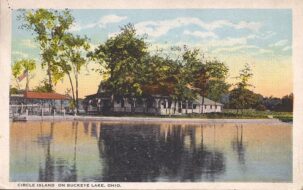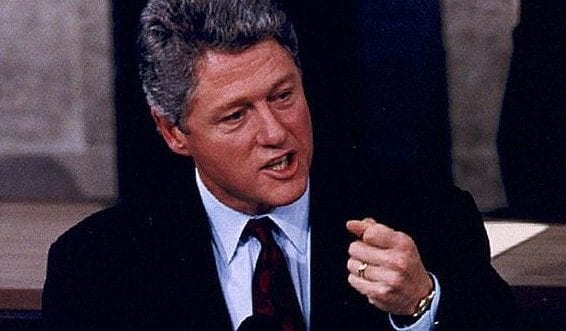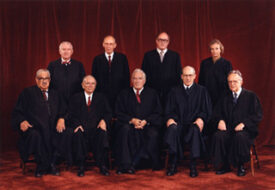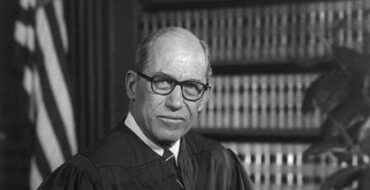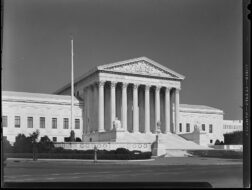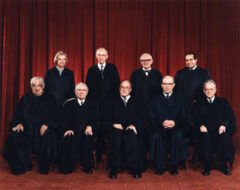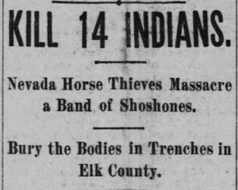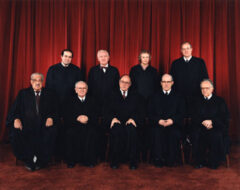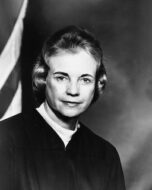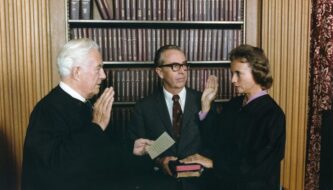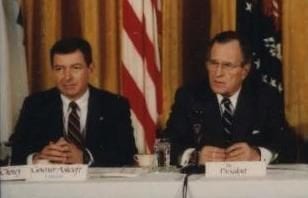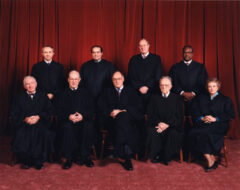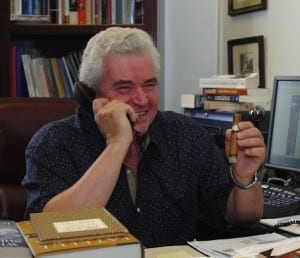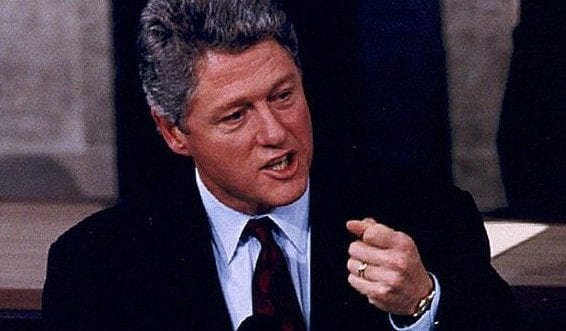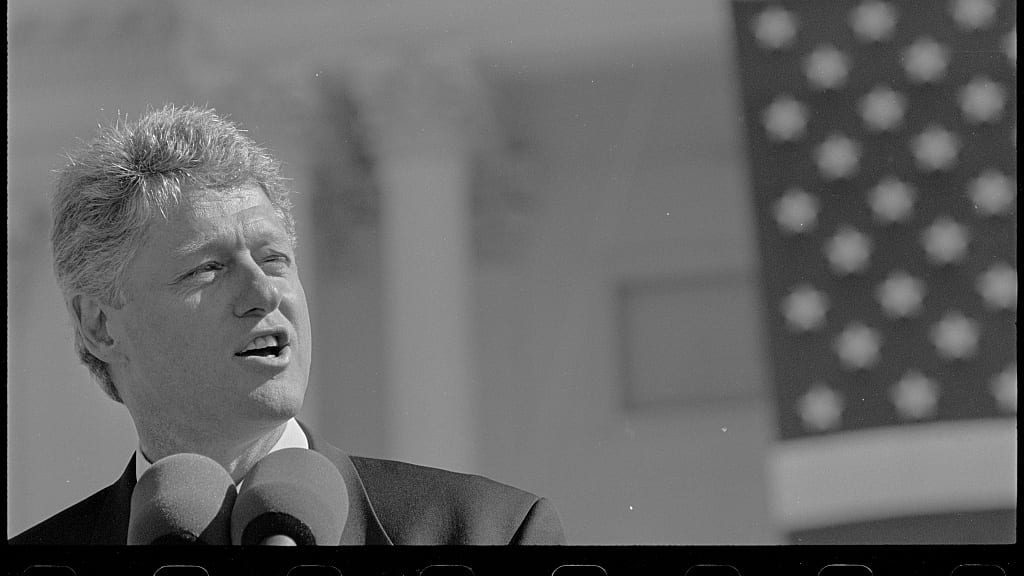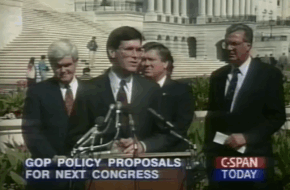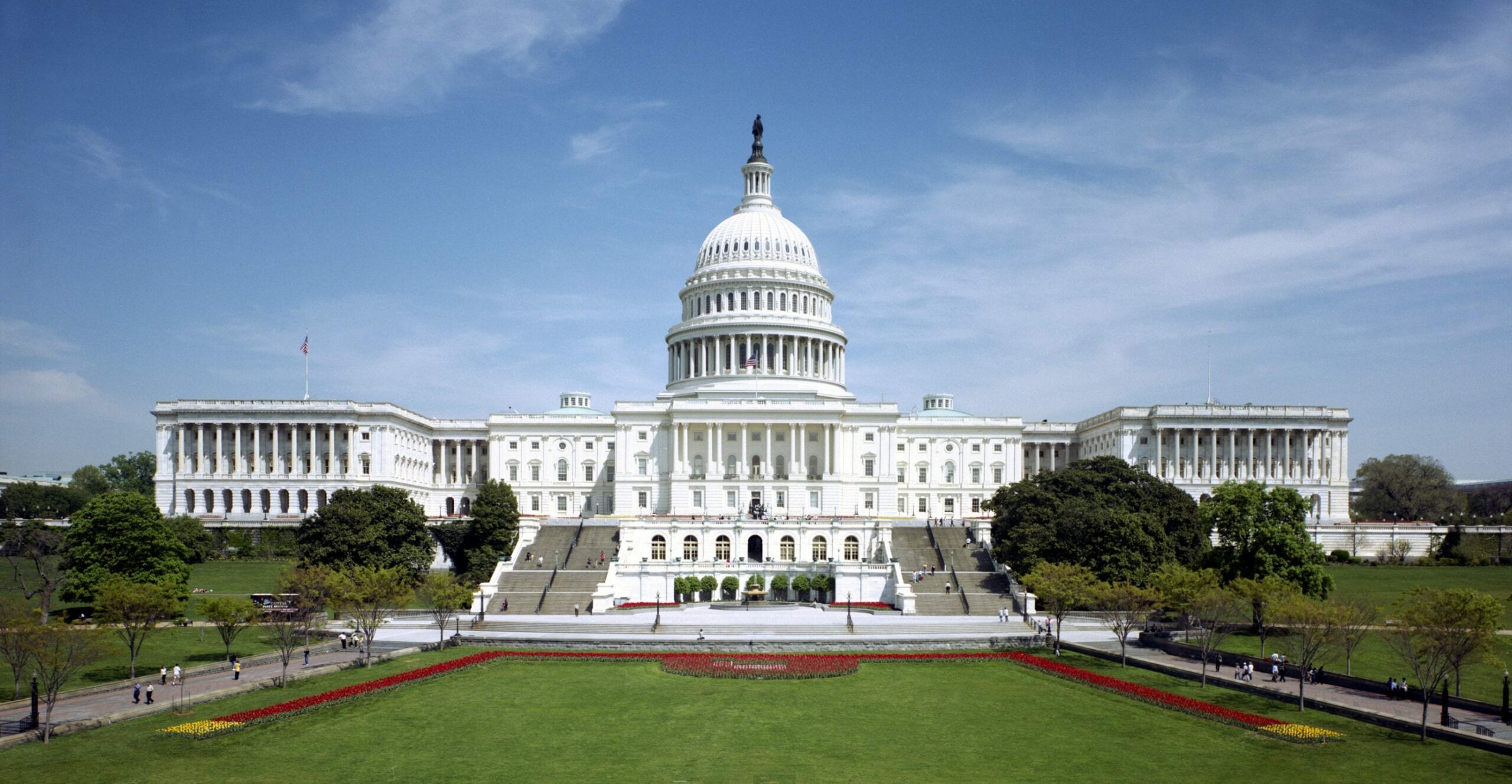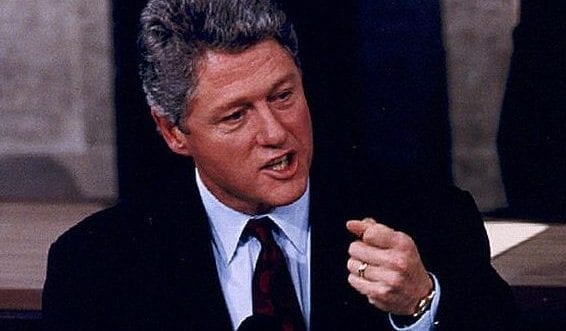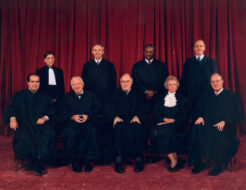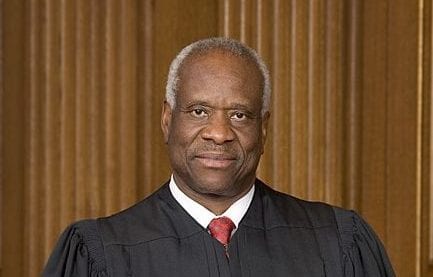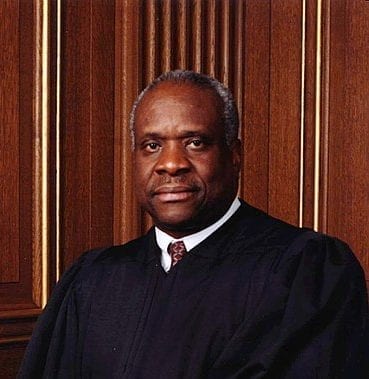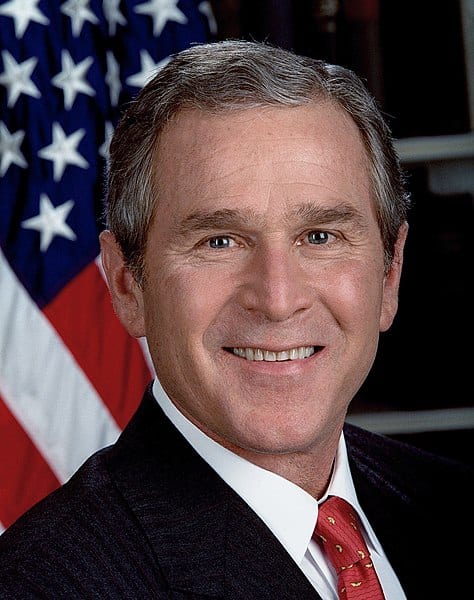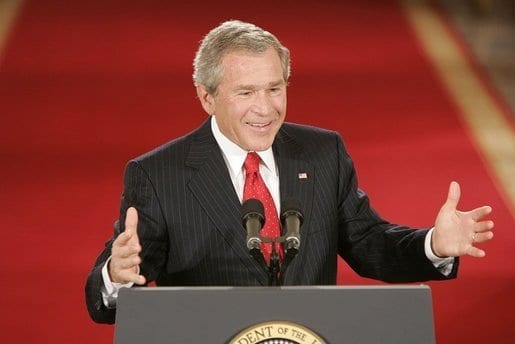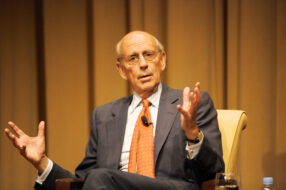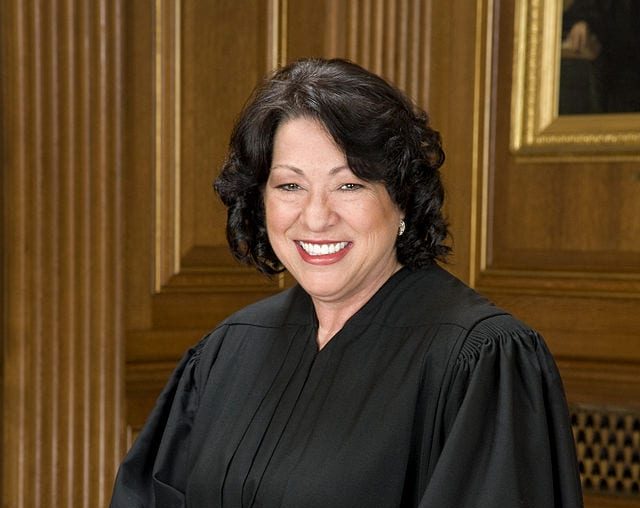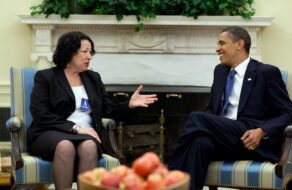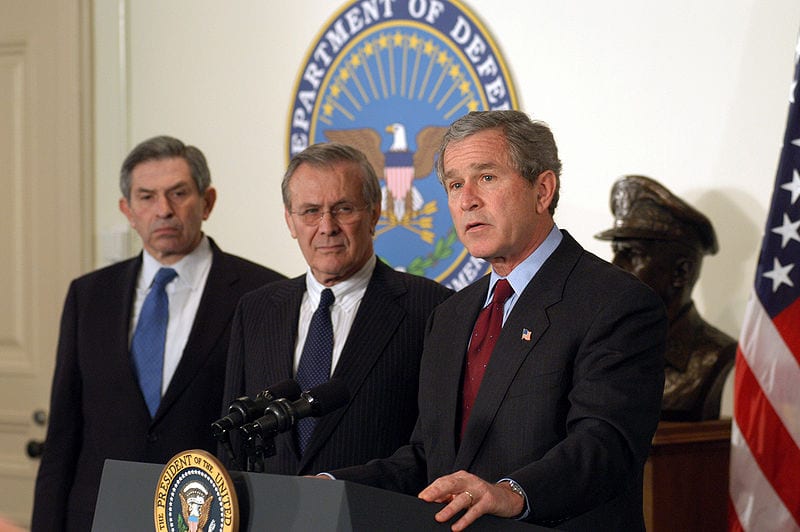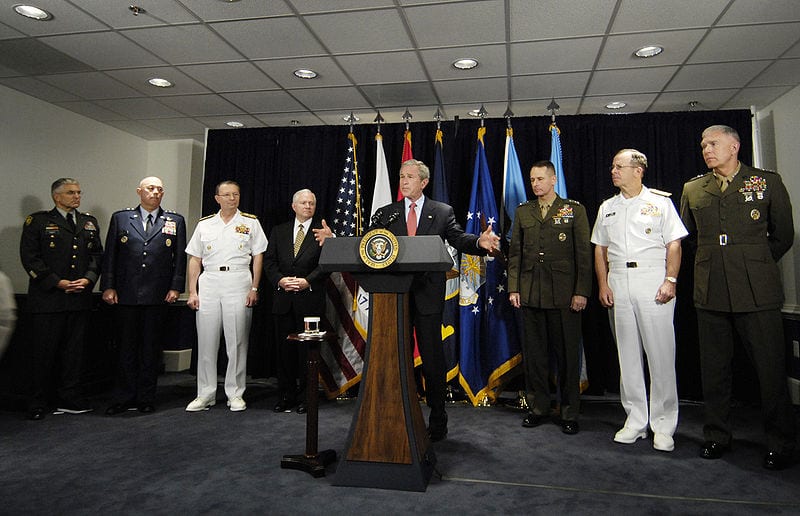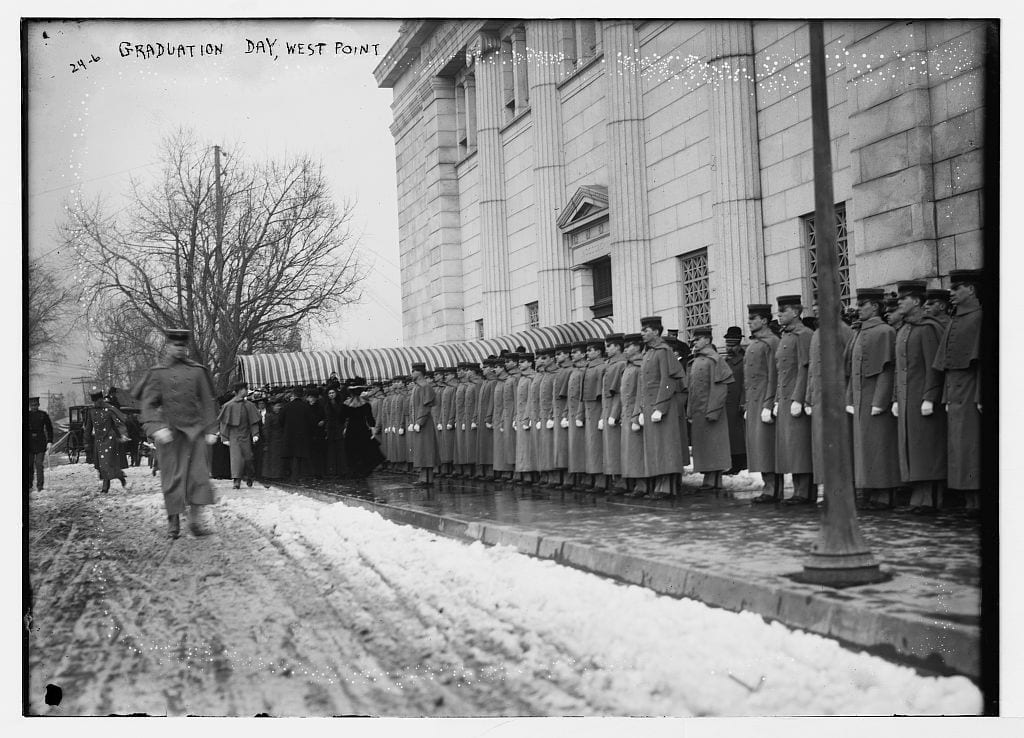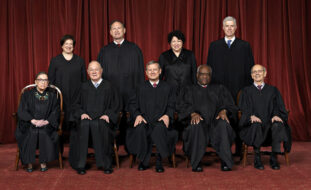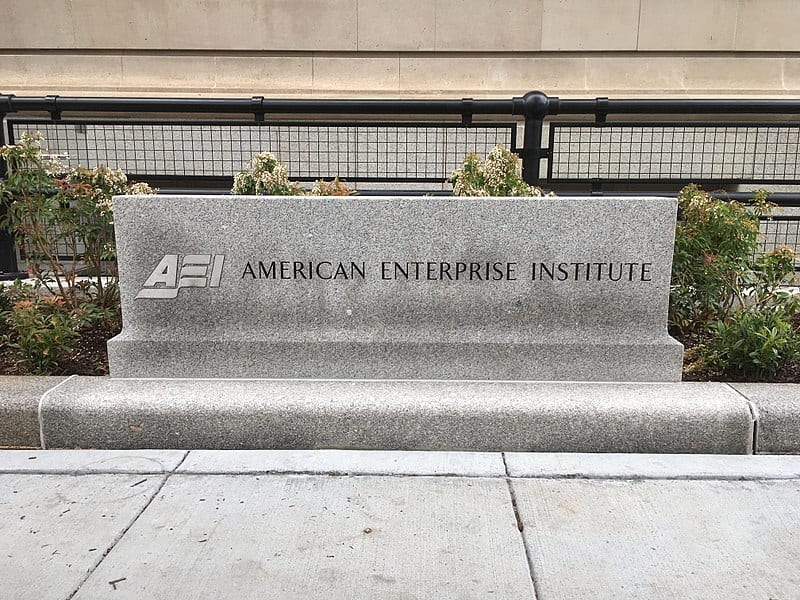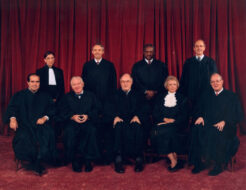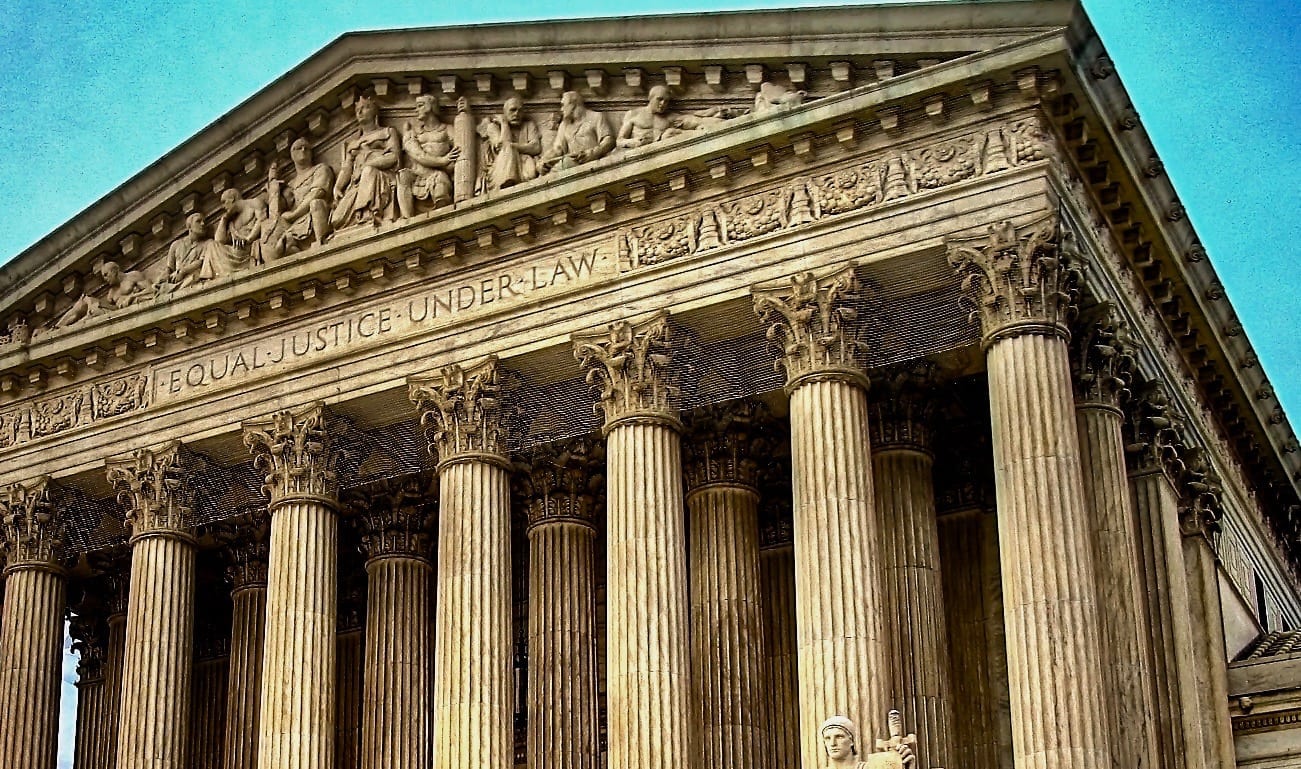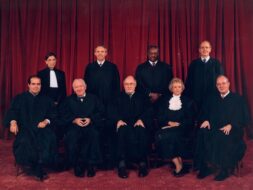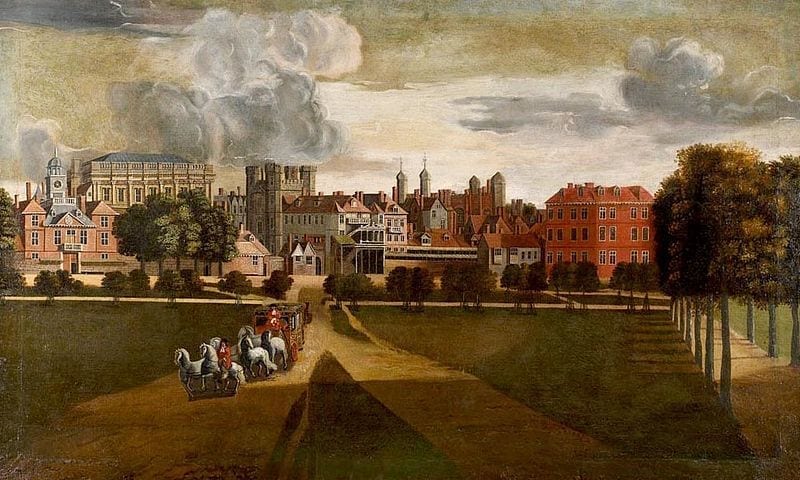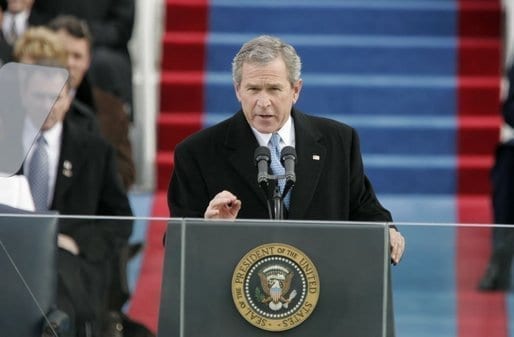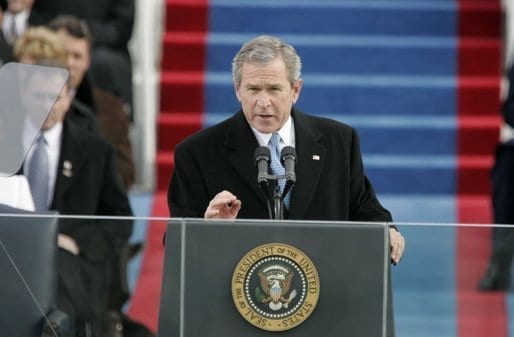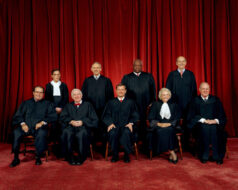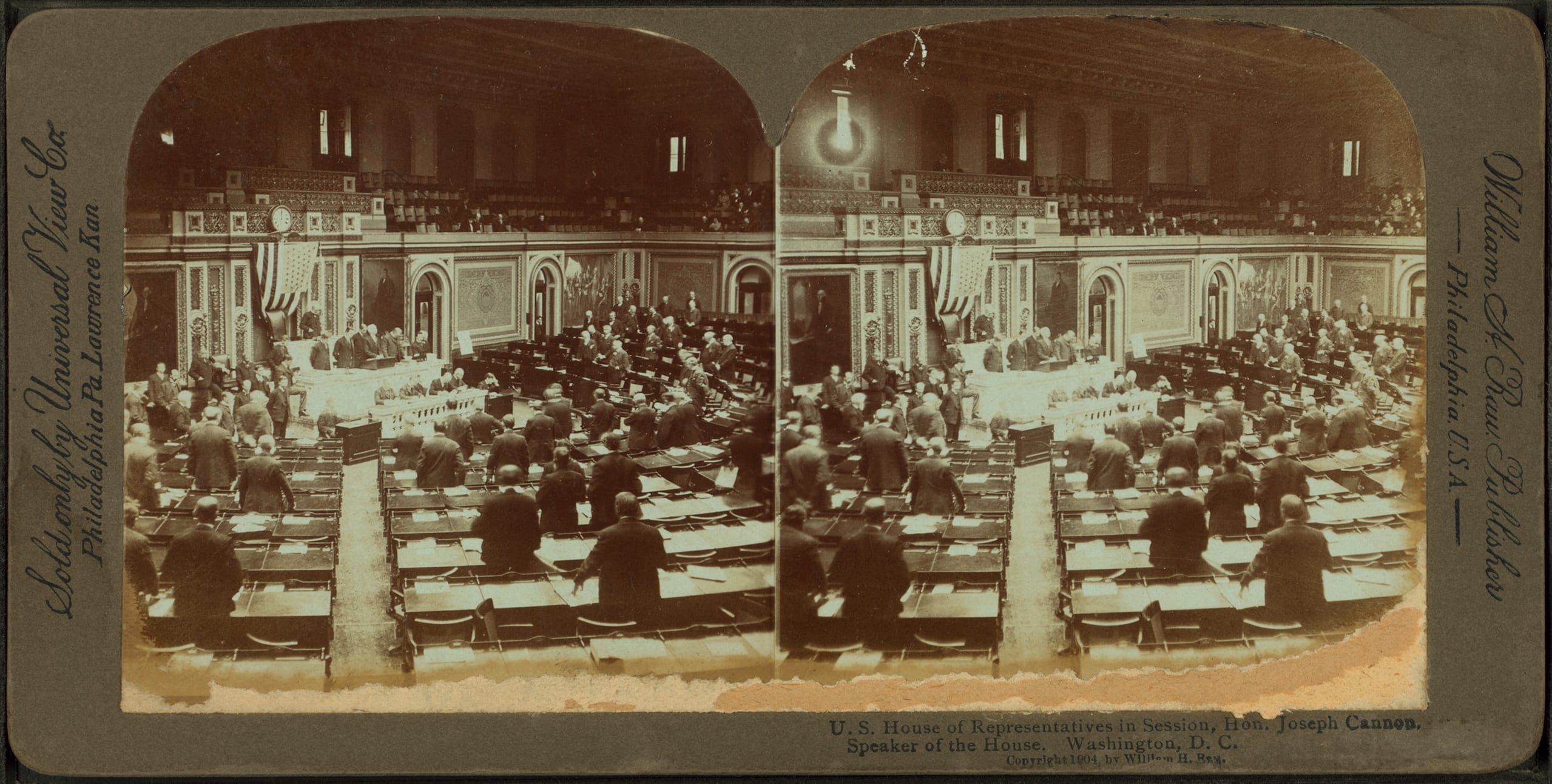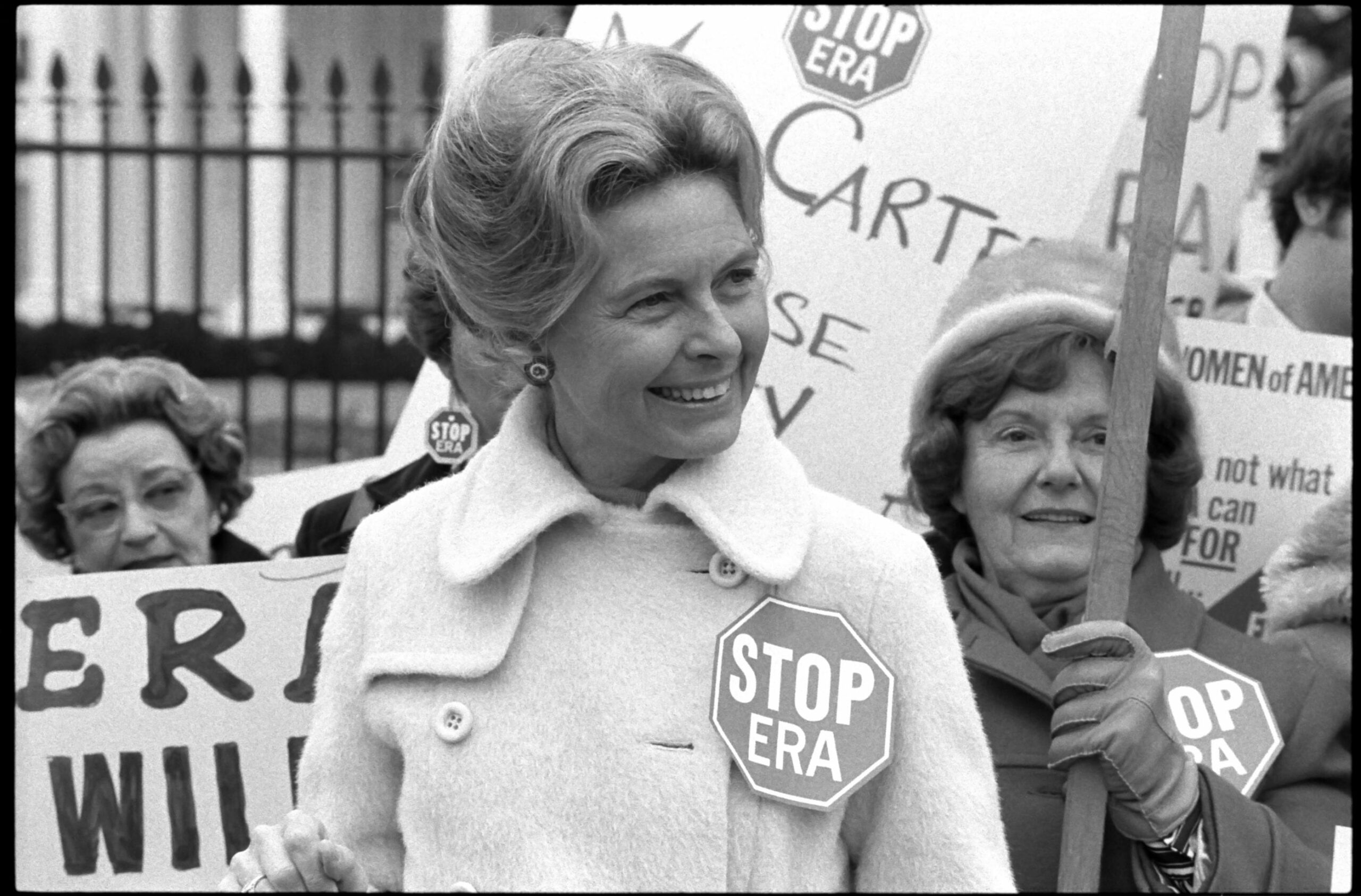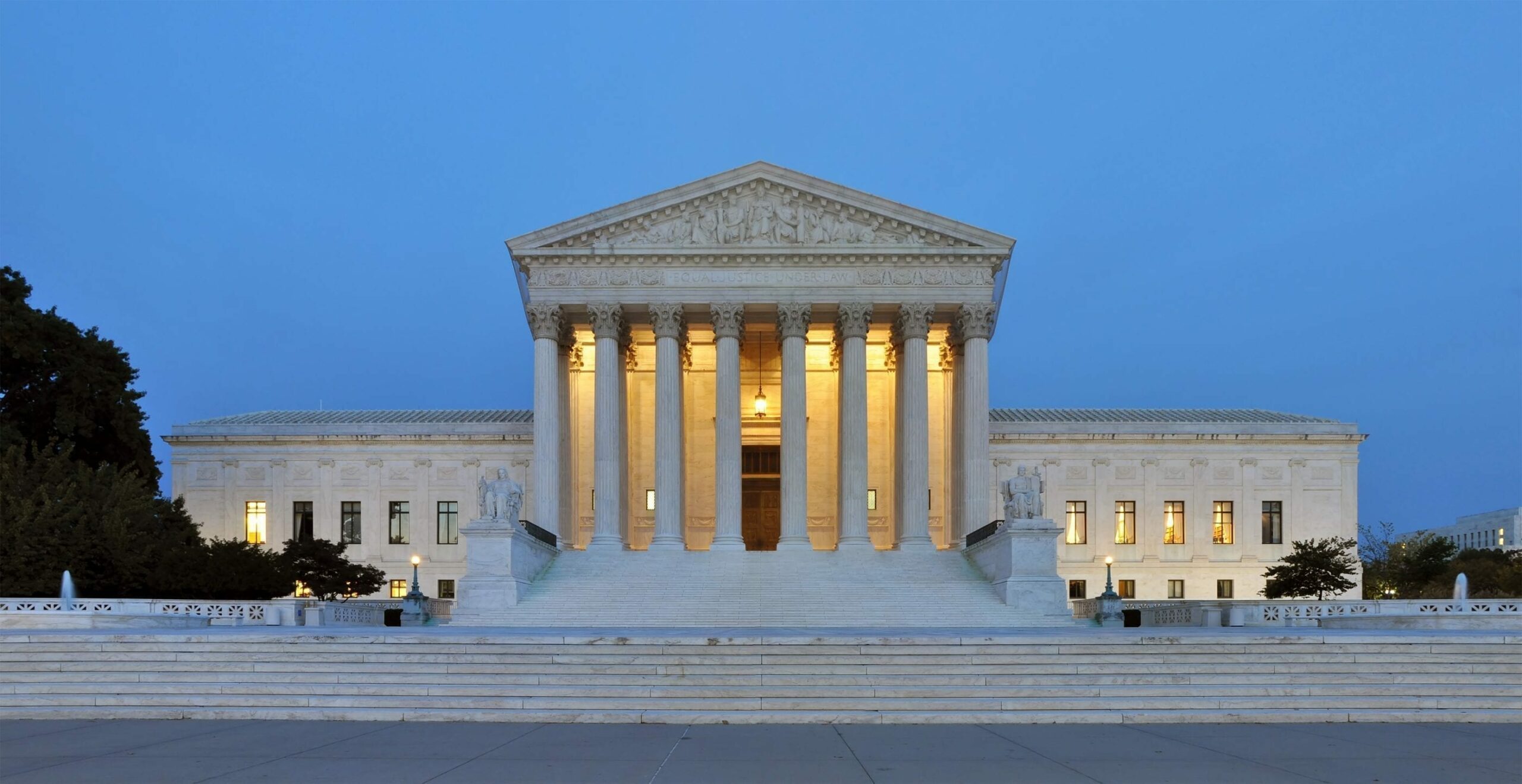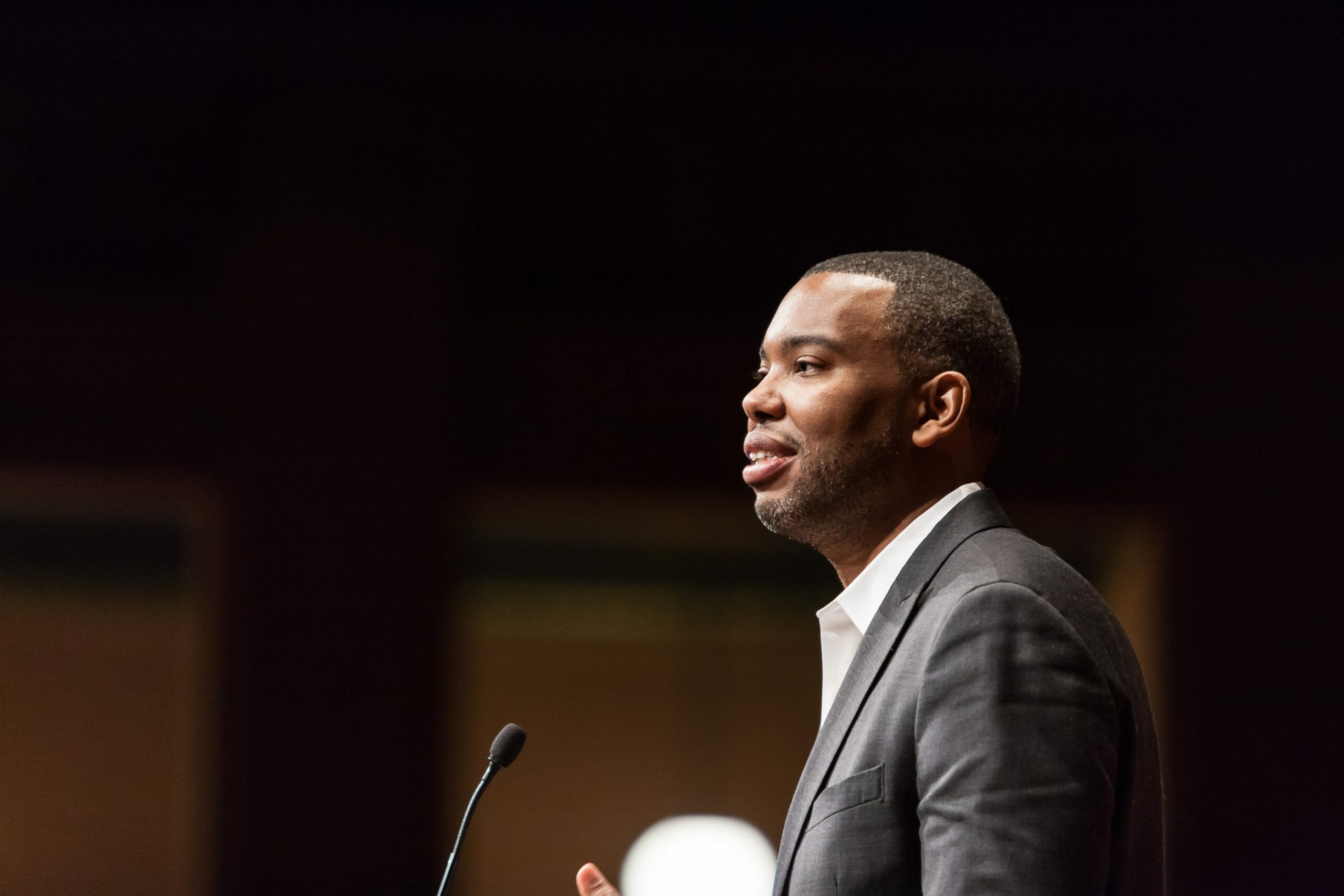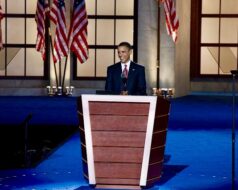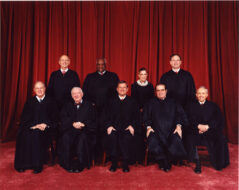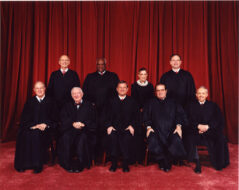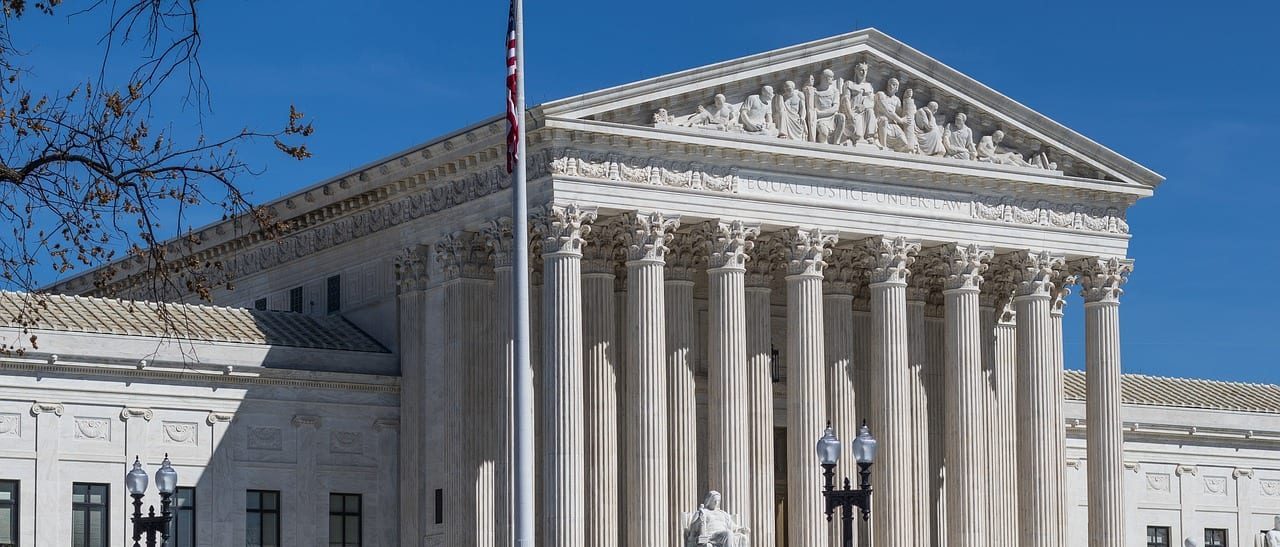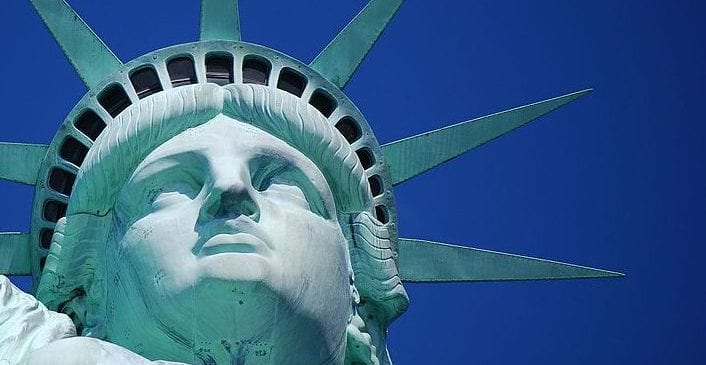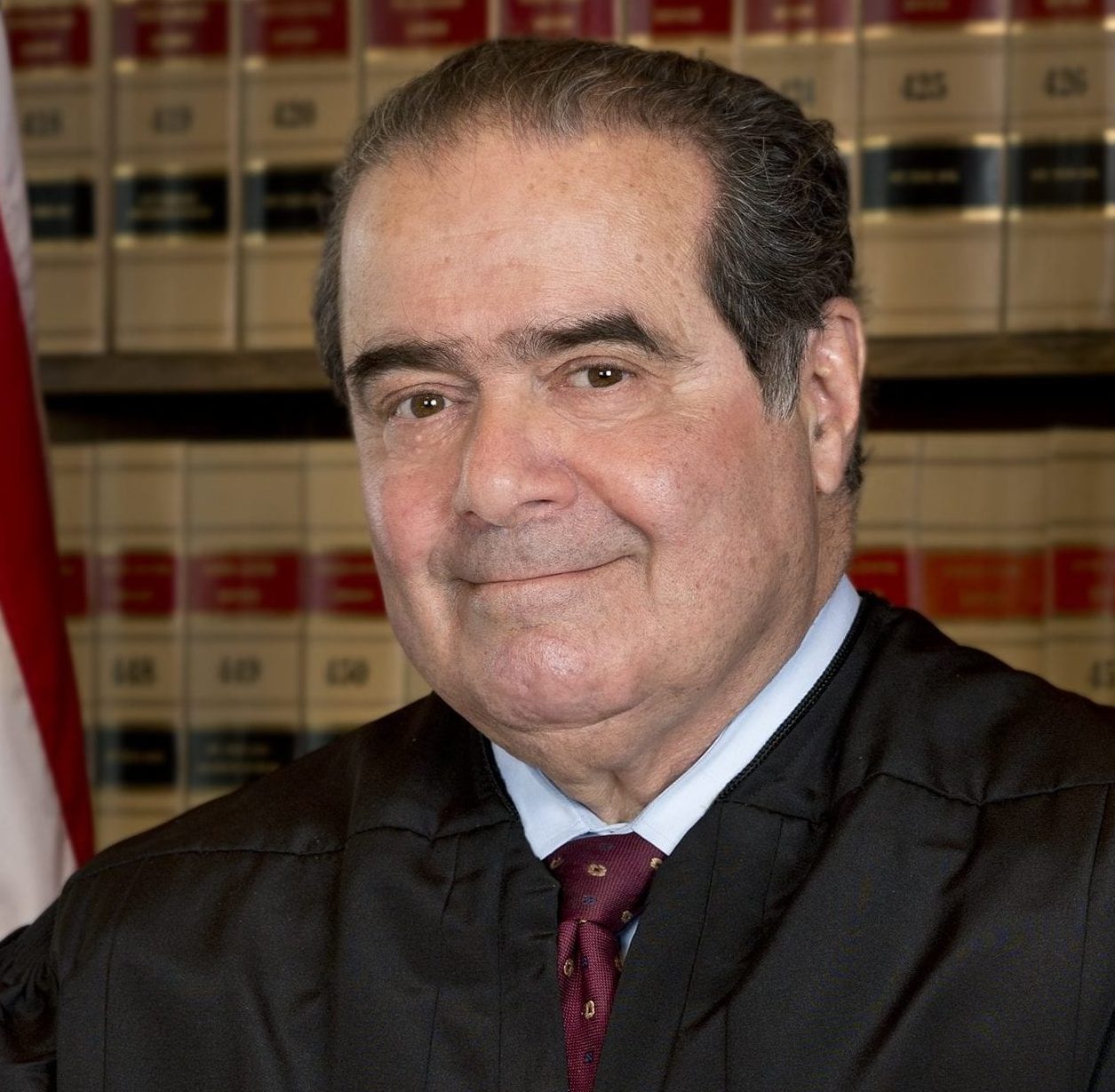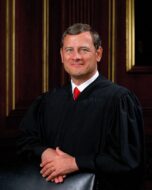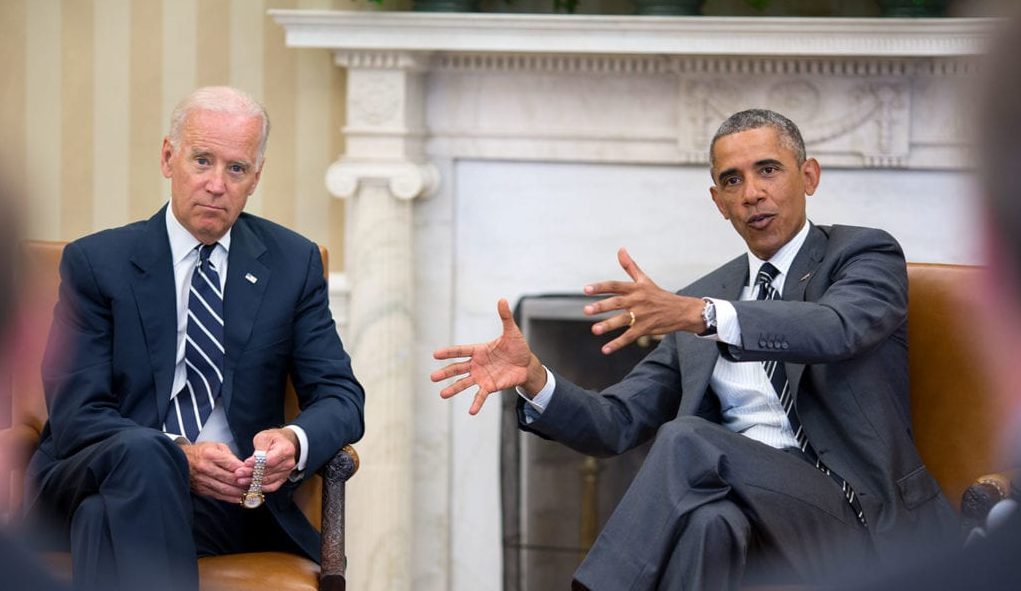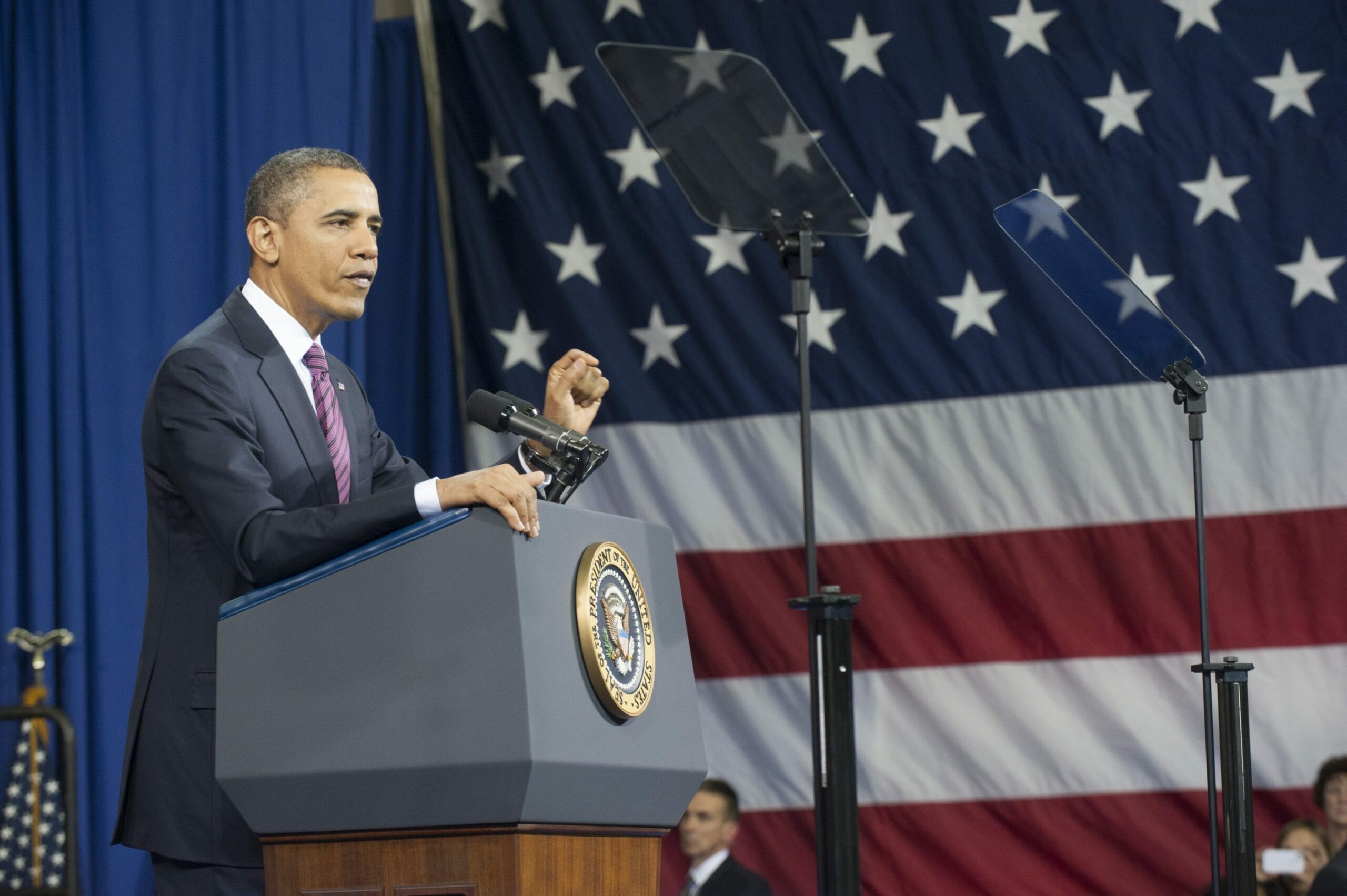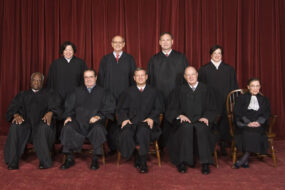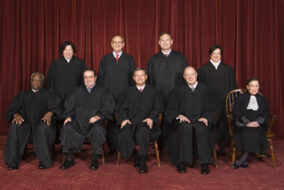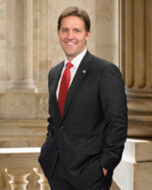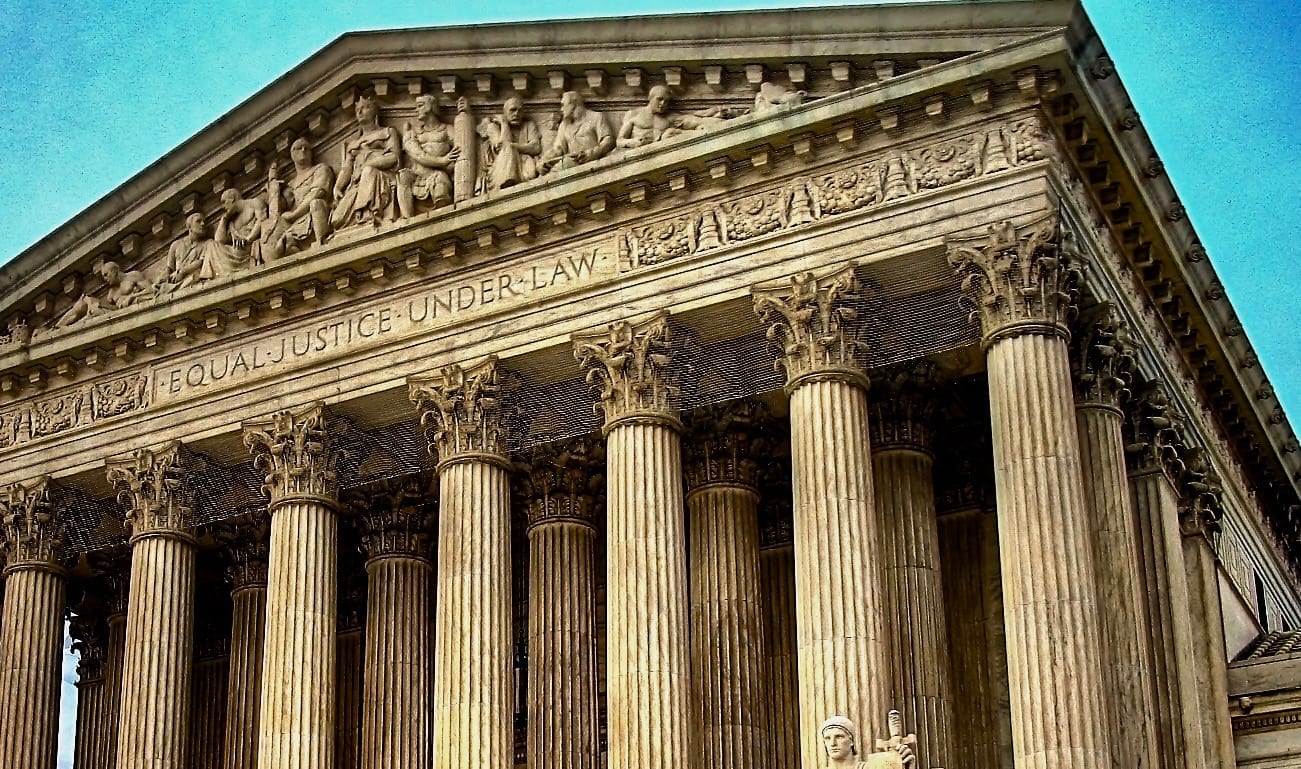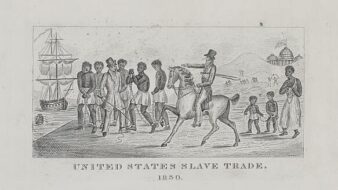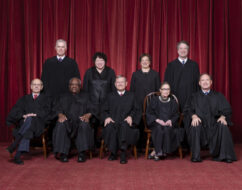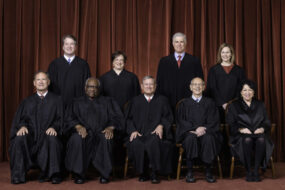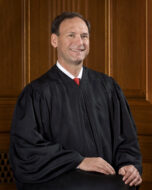


No related resources
Introduction
This case and the next, McCreary County v. American Civil Liberties Union of Kentucky are companion cases, announced the same day. Justice Stephen G. Breyer was the swing vote of the two 5-4 majorities, the first upholding a Ten Commandments monument on the Texas Capitol grounds, the second barring a Ten Commandments display within a Kentucky courthouse. The decisions reflect two different results of the government endorsement of religion test that arose in the wake of Lemon v. Kurzman.
Source: 543 U.S. 677 (2005), https://www.law.cornell.edu/supct/html/03-1500.ZO.html. We omit the opinion of the Court by Chief Justice William H. Rehnquist and provide instead the concurring opinions of Justices Clarence Thomas and Breyer and the dissent of Justice John Paul Stevens, whose argument is also reflected in Justice David H. Souter’s Court opinion in McCreary. Justice Thomas’s opinion exemplifies his originalist jurisprudence, which bases interpretation on the original public meaning of the Constitution’s text. Justice Stevens’ dissent criticizes the originalism of Justices Thomas and Antonin Scalia. We also omit the concurrence of Justice Scalia and the dissent of Justice Sandra Day O’Connor. Justice Breyer concurred in the opinion of the court but did not accept its argument. His opinion presents the facts of the case. Footnotes added by the editors are preceded by “Ed. note.”
Justice Breyer, concurring in the judgment.
. . . While the Court’s prior tests provide useful guideposts—and might well lead to the same result the Court reaches today—no exact formula can dictate a resolution to such fact-intensive cases.
The case before us is a borderline case. It concerns a large granite monument bearing the text of the Ten Commandments located on the grounds of the Texas State Capitol. On the one hand, the Commandments’ text undeniably has a religious message, invoking, indeed emphasizing, the deity. On the other hand, focusing on the text of the Commandments alone cannot conclusively resolve this case. Rather, to determine the message that the text here conveys, we must examine how the text is used. And that inquiry requires us to consider the context of the display.
In certain contexts, a display of the tablets of the Ten Commandments can convey not simply a religious message, but also a secular moral message (about proper standards of social conduct). And in certain contexts, a display of the tablets can also convey a historical message (about a historic relation between those standards and the law)—a fact that helps to explain the display of those tablets in dozens of courthouses throughout the nation, including the Supreme Court of the United States.
Here the tablets have been used as part of a display that communicates not simply a religious message, but a secular message as well. The circumstances surrounding the display’s placement on the capitol grounds and its physical setting suggest that the state itself intended the latter, nonreligious aspects of the tablets’ message to predominate. And the monument’s 40-year history on the Texas State grounds indicates that that has been its effect. . . .
The physical setting of the monument, moreover, suggests little or nothing of the sacred.[1] The monument sits in a large park containing 17 monuments and 21 historical markers, all designed to illustrate the “ideals” of those who settled in Texas and of those who have lived there since that time. The setting does not readily lend itself to meditation or any other religious activity. But it does provide a context of history and moral ideals. It (together with the display’s inscription about its origin) communicates to visitors that the state sought to reflect moral principles, illustrating a relation between ethics and law that the state’s citizens, historically speaking, have endorsed. That is to say, the context suggests that the state intended the display’s moral message—an illustrative message reflecting the historical “ideals” of Texans—to predominate.
If these factors provide a strong, but not conclusive, indication that the Commandments’ text on this monument conveys a predominantly secular message, a further factor is determinative here. As far as I can tell, 40 years passed in which the presence of this monument, legally speaking, went unchallenged (until the single legal objection raised by petitioner). And I am not aware of any evidence suggesting that this was due to a climate of intimidation. . . . Those 40 years suggest that the public visiting the capitol grounds has considered the religious aspect of the tablets’ message as part of what is a broader moral and historical message reflective of a cultural heritage.
This case, moreover, is distinguishable from instances where the Court has found Ten Commandments displays impermissible. The display is not on the grounds of a public school, where, given the impressionability of the young, government must exercise particular care in separating church and state. . . .
For these reasons, I believe that the Texas display—serving a mixed but primarily nonreligious purpose, not primarily “advanc[ing]” or “inhibit[ing] religion,” and not creating an “excessive government entanglement with religion,”[2]—might satisfy this Court’s more formal Establishment Clause tests. But, as I have said, in reaching the conclusion that the Texas display falls on the permissible side of the constitutional line, I rely less upon a literal application of any particular test than upon consideration of the basic purposes of the First Amendment’s Religion Clauses themselves. This display has stood apparently uncontested for nearly two generations. That experience helps us understand that as a practical matter of degree this display is unlikely to prove divisive. And this matter of degree is, I believe, critical in a borderline case such as this one.
At the same time, to reach a contrary conclusion here, based primarily on the religious nature of the tablets’ text would, I fear, lead the law to exhibit a hostility toward religion that has no place in our Establishment Clause traditions. Such a holding might well encourage disputes concerning the removal of longstanding depictions of the Ten Commandments from public buildings across the nation. And it could thereby create the very kind of religiously based divisiveness that the Establishment Clause seeks to avoid. . . .
In light of these considerations, I cannot agree with today’s plurality’s analysis. Nor can I agree with Justice Scalia’s dissent in McCreary County. I do agree with Justice O’Connor’s statement of principles in McCreary County, though I disagree with her evaluation of the evidence as it bears on the application of those principles to this case.
I concur in the judgment of the Court.
Justice Thomas, concurring.
The Court holds that the Ten Commandments monument found on the Texas State Capitol grounds does not violate the Establishment Clause. Rather than trying to suggest meaninglessness where there is meaning, the chief justice rightly recognizes that the monument has “religious significance.” He properly recognizes the role of religion in this nation’s history and the permissibility of government displays acknowledging that history. For those reasons, I join the chief justice’s opinion in full.
This case would be easy if the Court were willing to abandon the inconsistent guideposts it has adopted for addressing Establishment Clause challenges, and return to the original meaning of the clause. I have previously suggested that the clause’s text and history “resis[t] incorporation” against the states.[3] If the Establishment Clause does not restrain the states, then it has no application here, where only state action is at issue.
Even if the clause is incorporated, or if the Free Exercise Clause limits the power of states to establish religions, our task would be far simpler if we returned to the original meaning of the word “establishment” than it is under the various approaches this Court now uses. The Framers understood an establishment “necessarily [to] involve actual legal coercion.”. . . “In other words, establishment at the founding involved, for example, mandatory observance or mandatory payment of taxes supporting ministers.” And “government practices that have nothing to do with creating or maintaining . . . coercive state establishments” simply do not “implicate the possible liberty interest of being free from coercive state establishments.”[4]
There is no question that, based on the original meaning of the Establishment Clause, the Ten Commandments display at issue here is constitutional. In no sense does Texas compel petitioner Van Orden to do anything. The only injury to him is that he takes offense at seeing the monument as he passes it on his way to the Texas Supreme Court Library. He need not stop to read it or even to look at it, let alone to express support for it or adopt the Commandments as guides for his life. The mere presence of the monument along his path involves no coercion and thus does not violate the Establishment Clause.
Returning to the original meaning would do more than simplify our task. It also would avoid the pitfalls present in the Court’s current approach to such challenges. This Court’s precedent elevates the trivial to the proverbial “federal case,” by making benign signs and postings subject to challenge. Yet even as it does so, the Court’s precedent attempts to avoid declaring all religious symbols and words of longstanding tradition unconstitutional, by counterfactually declaring them of little religious significance. Even when the Court’s cases recognize that such symbols have religious meaning, they adopt an unhappy compromise that fails fully to account for either the adherent’s or the nonadherent’s beliefs, and provides no principled way to choose between them. Even worse, the incoherence of the Court’s decisions in this area renders the Establishment Clause impenetrable and incapable of consistent application. All told, this Court’s jurisprudence leaves courts, governments, and believers and nonbelievers alike confused–an observation that is hardly new.
First, this Court’s precedent permits even the slightest public recognition of religion to constitute an establishment of religion. For example, individuals frequenting a county courthouse have successfully challenged as an Establishment Clause violation a sign at the courthouse alerting the public that the building was closed for Good Friday and containing a 4-inch high crucifix. Similarly, a park ranger has claimed that a cross erected to honor World War I veterans on a rock in the Mojave Desert Preserve violated the Establishment Clause, and won. If a cross in the middle of a desert establishes a religion, then no religious observance is safe from challenge. Still other suits have charged that city seals containing religious symbols violate the Establishment Clause. In every instance, the litigants are mere “[p]assersby . . . free to ignore [such symbols or signs], or even to turn their backs, just as they are free to do when they disagree with any other form of government speech.”[5]
Second, in a seeming attempt to balance out its willingness to consider almost any acknowledgment of religion an establishment, in other cases members of this Court have concluded that the term or symbol at issue has no religious meaning by virtue of its ubiquity or rote ceremonial invocation. But words such as “God” have religious significance. For example, just last term this Court had before it a challenge to the recitation of the Pledge of Allegiance, which includes the phrase “one Nation under God.” The declaration that our country is “‘one Nation under God’” necessarily “entail[s] an affirmation that God exists.”[6] This phrase is thus anathema to those who reject God’s existence and a validation of His existence to those who accept it. Telling either nonbelievers or believers that the words “under God” have no meaning contradicts what they know to be true. Moreover, repetition does not deprive religious words or symbols of their traditional meaning. Words like “God” are not vulgarities for which the shock value diminishes with each successive utterance.
Even when this Court’s precedents recognize the religious meaning of symbols or words, that recognition fails to respect fully religious belief or disbelief. This Court looks for the meaning to an observer of indeterminate religious affiliation who knows all the facts and circumstances surrounding a challenged display. In looking to the view of this unusually informed observer, this Court inquires whether the sign or display “sends the ancillary message to . . . nonadherents ‘that they are outsiders, not full members of the political community, and an accompanying message to adherents that they are insiders, favored members of the political community.’”[7]
This analysis is not fully satisfying to either nonadherents or adherents. For the nonadherent, who may well be more sensitive than the hypothetical “reasonable observer,” or who may not know all the facts, this test fails to capture completely the honest and deeply felt offense he takes from the government conduct. For the adherent, this analysis takes no account of the message sent by removal of the sign or display, which may well appear to him to be an act hostile to his religious faith. The Court’s foray into religious meaning either gives insufficient weight to the views of nonadherents and adherents alike, or it provides no principled way to choose between those views. In sum, this Court’s effort to assess religious meaning is fraught with futility.
Finally, the very “flexibility” of this Court’s Establishment Clause precedent leaves it incapable of consistent application. The inconsistency between the decisions the Court reaches today in this case and in McCreary County v. American Civil Liberties Union of Ky.,[8] only compounds the confusion.
The unintelligibility of this Court’s precedent raises the further concern that, either in appearance or in fact, adjudication of Establishment Clause challenges turns on judicial predilections. The outcome of constitutional cases ought to rest on firmer grounds than the personal preferences of judges.
Much, if not all, of this would be avoided if the Court would return to the views of the Framers and adopt coercion as the touchstone for our Establishment Clause inquiry. Every acknowledgment of religion would not give rise to an Establishment Clause claim. Courts would not act as theological commissions, judging the meaning of religious matters. Most important, our precedent would be capable of consistent and coherent application. While the Court correctly rejects the challenge to the Ten Commandments monument on the Texas Capitol grounds, a more fundamental rethinking of our Establishment Clause jurisprudence remains in order.
Justice Stevens, with whom Justice Ginsburg joins, dissenting.
. . . . Government’s obligation to avoid divisiveness and exclusion in the religious sphere is compelled by the Establishment and Free Exercise Clauses, which together erect a wall of separation between church and state. This metaphorical wall protects principles long recognized and often recited in this Court’s cases. The first and most fundamental of these principles, one that a majority of this Court today affirms, is that the Establishment Clause demands religious neutrality—government may not exercise a preference for one religious faith over another. This essential command, however, is not merely a prohibition against the government’s differentiation among religious sects. We have repeatedly reaffirmed that neither a state nor the federal government “can constitutionally pass laws or impose requirements which aid all religions as against non-believers, and neither can aid those religions based on a belief in the existence of God as against those religions founded on different beliefs.”[9] This principle is based on the straightforward notion that governmental promotion of orthodoxy is not saved by the aggregation of several orthodoxies under the state’s banner.
Acknowledgments of this broad understanding of the neutrality principle are legion in our cases. Strong arguments to the contrary have been raised from time to time, perhaps the strongest in then-Justice Rehnquist’s scholarly dissent in Wallace v. Jaffree.[10] Powerful as his argument was, we squarely rejected it and thereby reaffirmed the principle that the Establishment Clause requires the same respect for the atheist as it does for the adherent of a Christian faith. As we wrote, “the Court has unambiguously concluded that the individual freedom of conscience protected by the First Amendment embodies the right to select any religious faith or none at all.”. . .
The plurality’s reliance on early religious statements and proclamations made by the Founders is also problematic because those views were not espoused at the Constitutional Convention in 1787 nor enshrined in the Constitution’s text. Thus, the presentation of these religious statements as a unified historical narrative is bound to paint a misleading picture. It does so here. In according deference to the statements of George Washington and John Adams, the Chief Justice and Justice Scalia, fail to account for the acts and publicly espoused views of other influential leaders of that time. Notably absent from their historical snapshot is the fact that Thomas Jefferson refused to issue the Thanksgiving proclamations that Washington had so readily embraced based on the argument that to do so would violate the Establishment Clause. The chief justice and Justice Scalia disregard the substantial debates that took place regarding the constitutionality of the early proclamations and acts they cite. . . .
The original understanding of the type of “religion” that qualified for constitutional protection under the Establishment Clause likely did not include those followers of Judaism and Islam who are among the preferred “monotheistic” religions Justice Scalia has embraced in his McCreary County opinion. The inclusion of Jews and Muslims inside the category of constitutionally favored religions surely would have shocked Chief Justice Marshall and Justice Story. Indeed, Justice Scalia is unable to point to any persuasive historical evidence or entrenched traditions in support of his decision to give specially preferred constitutional status to all monotheistic religions. Perhaps this is because the history of the Establishment Clause’s original meaning just as strongly supports a preference for Christianity as it does a preference for monotheism. Generic references to “God” hardly constitute evidence that those who spoke the word meant to be inclusive of all monotheistic believers; nor do such references demonstrate that those who heard the word spoken understood it broadly to include all monotheistic faiths. Justice Scalia’s inclusion of Judaism and Islam is a laudable act of religious tolerance, but it is one that is unmoored from the Constitution’s history and text, and moreover one that is patently arbitrary in its inclusion of some, but exclusion of other (e.g., Buddhism), widely practiced non-Christian religions. Given the original understanding of the men who championed our “Christian nation”—men who had no cause to view anti-Semitism or contempt for atheists as problems worthy of civic concern—one must ask whether Justice Scalia “has not had the courage (or the foolhardiness) to apply [his originalism] principle consistently.”[11]. . .
A reading of the First Amendment dependent on either of the purported original meanings expressed above would eviscerate the heart of the Establishment Clause. It would replace Jefferson’s “wall of separation” with a perverse wall of exclusion—Christians inside, non-Christians out. It would permit states to construct walls of their own choosing—Baptists inside, Mormons out; Jewish Orthodox inside, Jewish Reform out. A clause so understood might be faithful to the expectations of some of our Founders, but it is plainly not worthy of a society whose enviable hallmark over the course of two centuries has been the continuing expansion of religious pluralism and tolerance. . . .
It is our duty, therefore, to interpret the First Amendment’s command that “Congress shall make no law respecting an establishment of religion” not by merely asking what those words meant to observers at the time of the founding, but instead by deriving from the clause’s text and history the broad principles that remain valid today. . . .
To reason from the broad principles contained in the Constitution does not, as Justice Scalia suggests, require us to abandon our heritage in favor of unprincipled expressions of personal preference. The task of applying the broad principles that the Framers wrote into the text of the First Amendment is, in any event, no more a matter of personal preference than is one’s selection between two (or more) sides in a heated historical debate. We serve our constitutional mandate by expounding the meaning of constitutional provisions with one eye towards our nation’s history and the other fixed on its democratic aspirations. . . .
The principle that guides my analysis is neutrality. The basis for that principle is firmly rooted in our Nation’s history and our Constitution’s text. I recognize that the requirement that government must remain neutral between religion and irreligion would have seemed foreign to some of the Framers; so too would a requirement of neutrality between Jews and Christians. But cf. Letter from George Washington to the Hebrew Congregation in Newport, R. I. (Aug. 18, 1790.)[12] Fortunately, we are not bound by the Framers’ expectations—we are bound by the legal principles they enshrined in our Constitution. . .
- 1. Ed. note: Justice Breyer attached a photo of the park. See https://www.law.cornell.edu/supct/pdf/03-1500P.ZC2 at end.
- 2. Lemon, 403 U.S., at 612–613
- 3. Elk Grove Unified School Dist. v. Newdow, 542 U.S. 1, 46, (2004) and Zelman v. Simmons-Harris, 536 U.S. 639.
- 4. Ed. note: Justice Thomas quotes from his opinions in Newdow and Cutter v. Wilkinson, 544 U.S. 709 (2005.)
- 5. County of Allegheny v. American Civil Liberties Union, Greater Pittsburgh Chapter, 492 U.S. 573, 664 (1989)
- 6. Ed. note: Justice Thomas quotes from his opinion in Newdow.
- 7. Santa Fe Independent School Dist. v. Doe, 530 U.S. 290, (2000)
- 8. Ed. note: McCreary County v. ACLU of Kentucky
- 9. Torcaso v. Watkins, 367 U.S. 488, 495 (1961)
- 10. Ed. note: Wallace v. Jaffree
- 11. Ed. note: Justice Stevens quotes from Justice Scalia’s opinion in McCreary.
- 12. Ed. note: https://teachingamericanhistory.org/library/document/letter-to-the-hebrew-congregation-at-newport-2/?_sf_s=Hebrew+Congregation

Conversation-based seminars for collegial PD, one-day and multi-day seminars, graduate credit seminars (MA degree), online and in-person.
